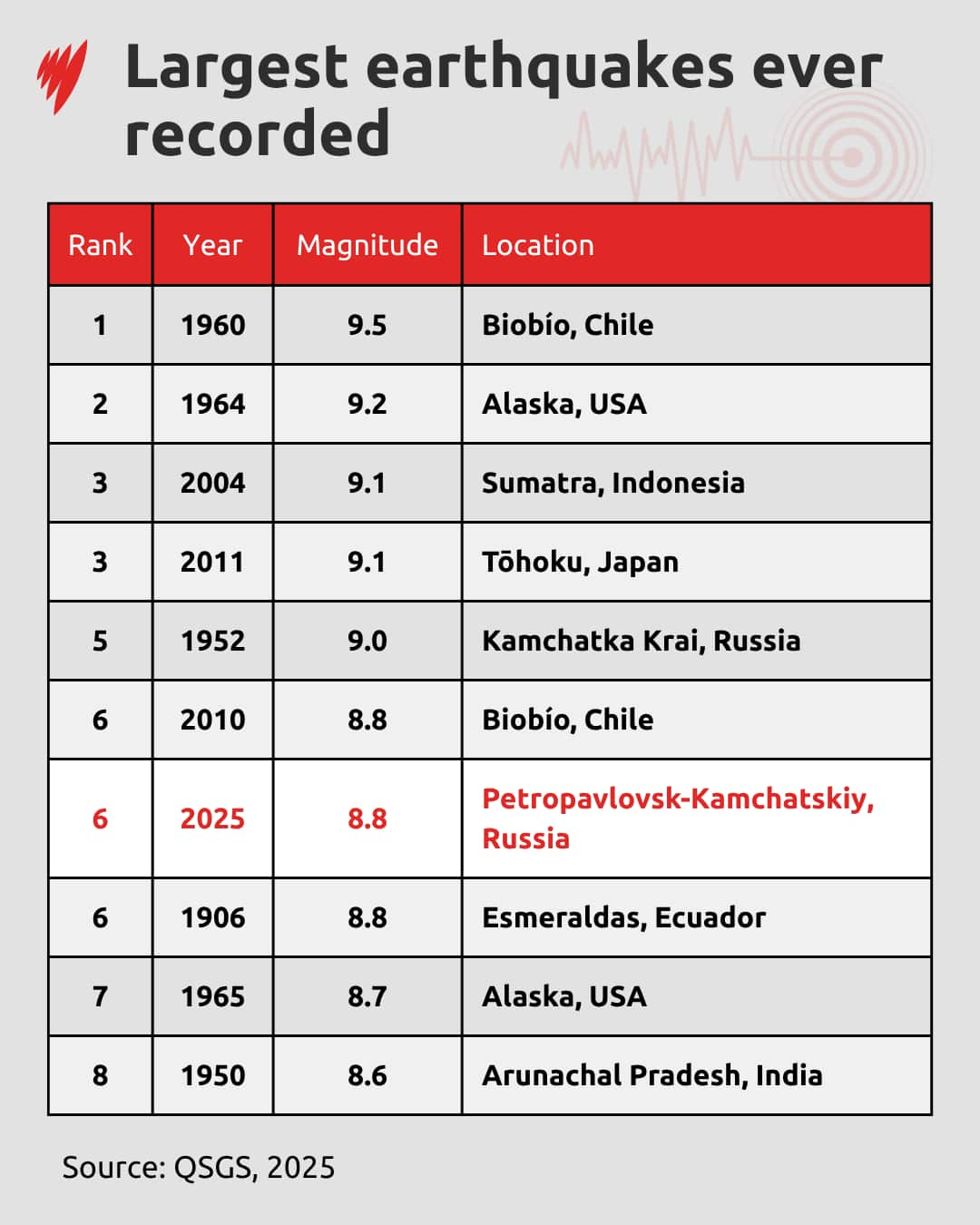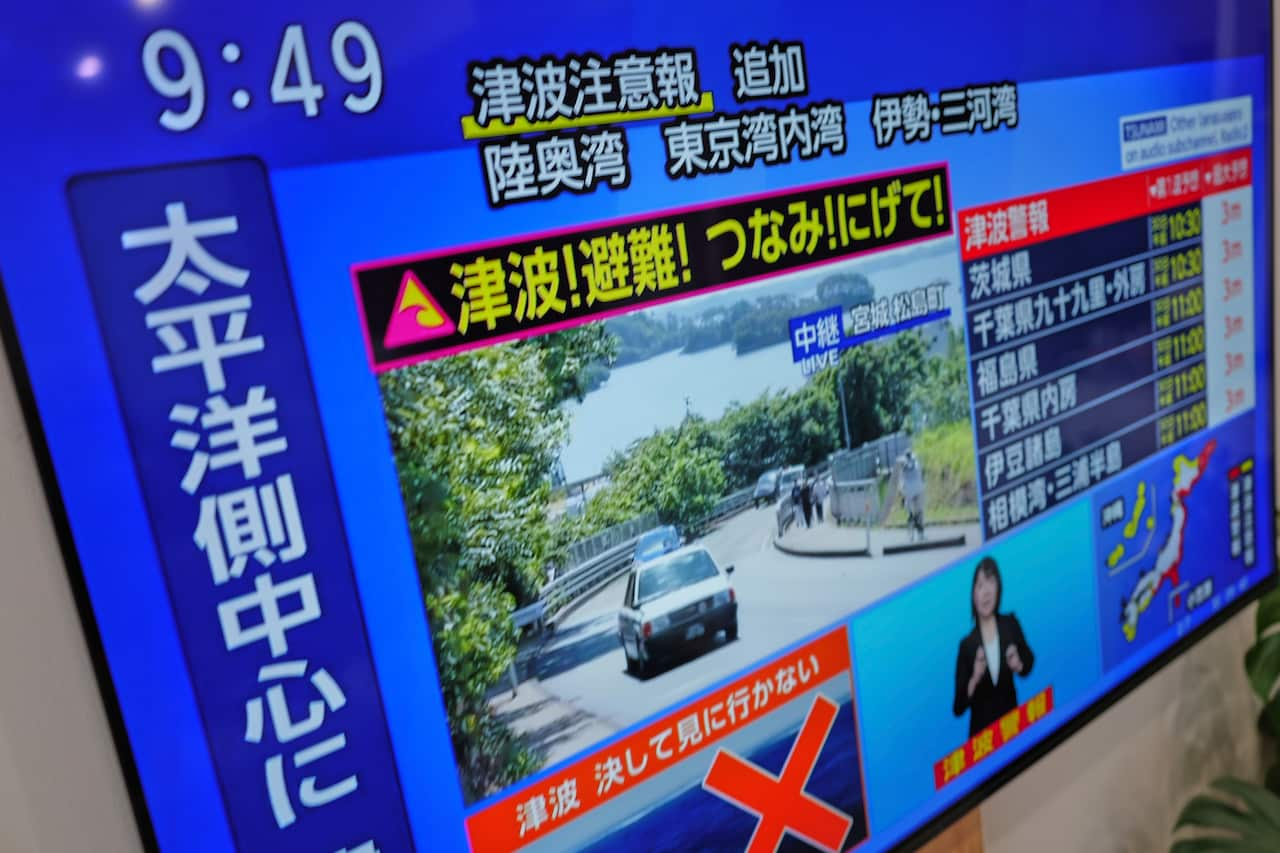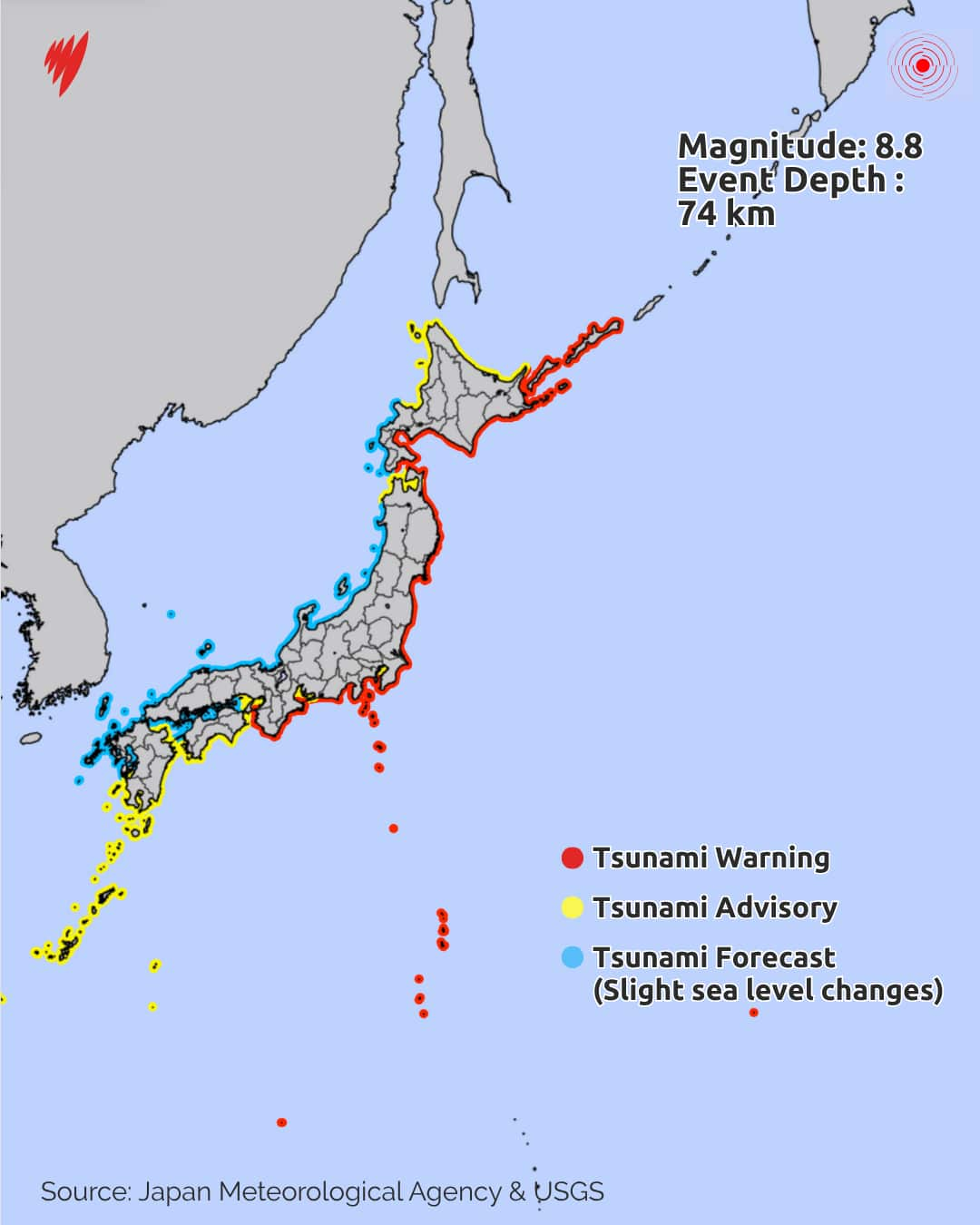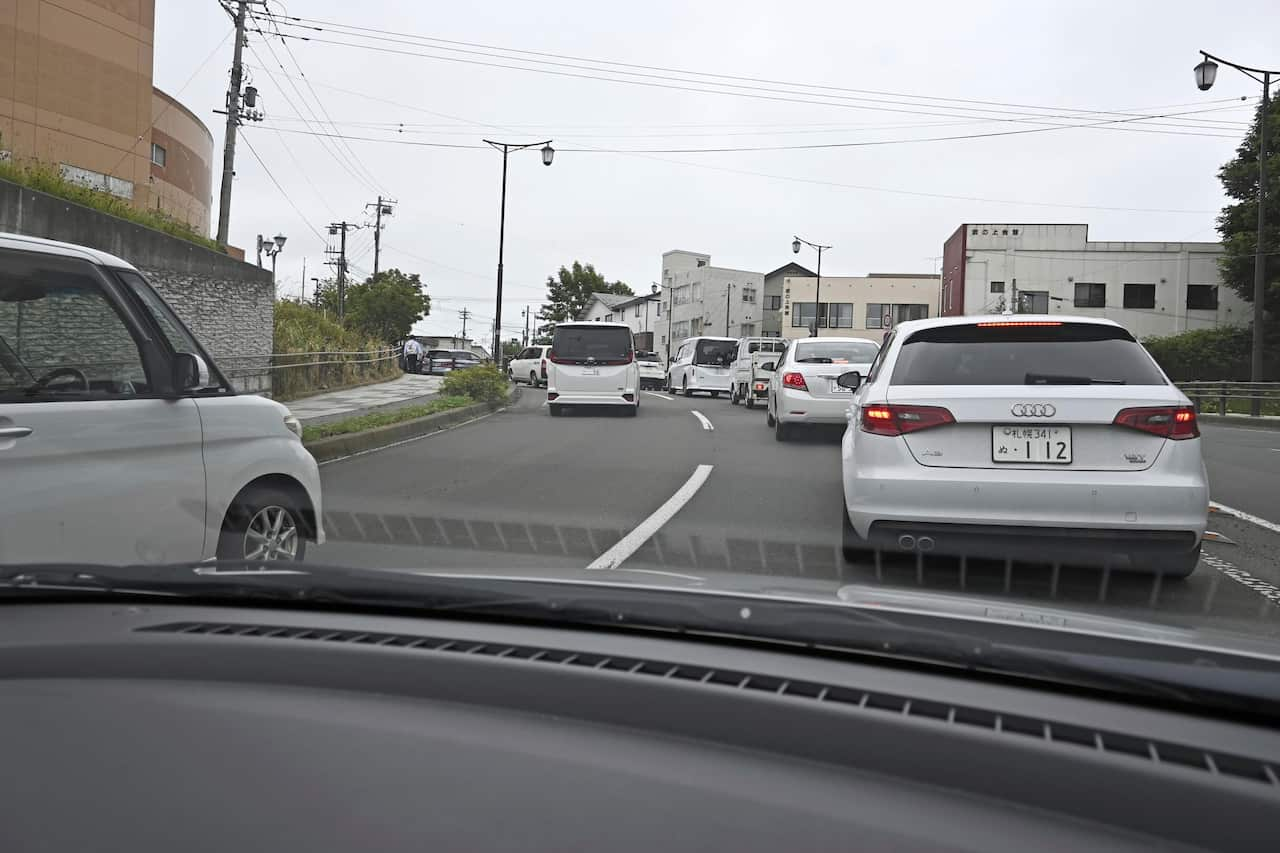A powerful magnitude 8.8 earthquake off Russia’s far eastern Kamchatka Peninsula has triggered tsunami waves up to 5m and sparked evacuation orders in Hawaii and across the Pacific.The shallow earthquake damaged buildings and injured several people in the remote Russian region, while much of Japan’s eastern seaboard — devastated by a 9.0 magnitude earthquake and tsunami in 2011 — was ordered to evacuate.In Hawaii, coastal residents were told to get to high ground or the fourth floor or above of buildings, and the US Coast Guard ordered ships out of harbours as the tsunami approached.”Take Action! Destructive tsunami waves expected,” the Honolulu Department of Emergency Management said on X.
Shortly after 0600 GMT, the Pacific Tsunami Warning Center said 1-1.2m waves were impacting the Hawaiian islands.

Source: SBS News
Tsunami waves struck parts of Kamchatka, partially flooding the port and a fish processing plant in the town of Severo-Kurilsk and sweeping vessels from their moorings, regional officials and Russia’s emergency ministry said.”Today’s earthquake was serious and the strongest in decades of tremors,” Kamchatka governor Vladimir Solodov said in a video posted on the Telegram messaging app. Russian scientists said it was the most powerful quake to hit the region since 1952.Russia’s Ministry for Emergency Services said on Telegram that a kindergarten was damaged but most buildings withstood the quake. No serious injuries or fatalities have been reported.Australia’s Bureau of Meteorology said there was no tsunami threat to Australia following the quake.The US Geological Survey said the earthquake was shallow at a depth of 19.3 km, and centred 119 km east-southeast of Petropavlovsk-Kamchatsky, a city of 165,000.
It revised the magnitude up from 8.0 earlier, and reported a series of strong aftershocks up to a magnitude of 6.9.

Japan’s weather agency issued a tsunami warning of waves up to 3m on its Pacific coasts. Source: AAP / AP/Eugene Hoshiko
A resident in the city of Petropavlovsk-Kamchatsky said the shaking rumbled for several minutes.
“I decided to leave the building,” said Yaroslav, 25. “It felt like the walls could collapse any moment. The shaking lasted continuously for at least three minutes.”
Warnings across the Pacific, Fukushima workers evacuated
Tsunami alarms sounded in coastal towns across Japan’s Pacific coast and evacuation orders were issued for tens of thousands of people.Workers evacuated the stricken Fukushima nuclear plant, where a meltdown following the 2011 tsunami caused a radioactive disaster, operator TEPCO said.
Footage on public broadcaster NHK showed scores of people on the northern island of Hokkaido on the roof of a building, sheltering under tents from the beating sun, as fishing boats left harbours to avoid potential damage from the incoming waves.

Japan’s weather agency issued a tsunami warning of waves up to 3m on its Pacific coasts following the 8.8 magnitude quake. Source: SBS News
Carmaker Nissan Motor suspended operations at certain domestic factories in Japan to ensure employee safety, Kyodo news agency reported.Three tsunami waves had been recorded in Japan, the largest of 1.3m, officials said. Japan’s chief cabinet secretary Yoshimasa Hayashi said there were no injuries or damage reported so far, and no irregularities at any nuclear plants.Tsunami waves of between 1-3m can be fatal for people who are swept away, said NHK. They can also cause flooding and damage wooden buildings, with people at risk of being killed by large drifting objects, according to the Japan Lifesaving Association.
The US Tsunami Warning System also warned of “hazardous tsunami waves” spreading across the Pacific.

The Japanese government issued evacuation orders for some areas, with residents urged to go to higher ground and stay away from the coast. Source: AAP / AP
Waves reaching more than 3m were possible along some coasts of Russia, the northern Hawaiian islands and Ecuador, while waves of 1-3m were possible in countries including Japan, Hawaii, Chile and the Solomon Islands, it said.Smaller waves were possible along coastlines across much of the Pacific, including the US West Coast.


AloJapan.com